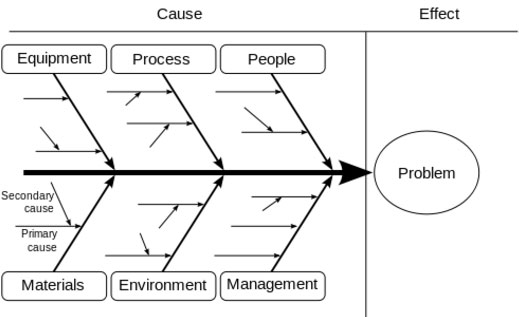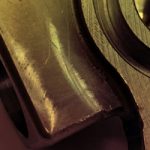If you outsource the production of parts for your designs, you’ve probably experienced quality issues on at least one occasion. Maybe quality remains a problem you just can’t seem to solve.
The solution is to catch quality issues early on in the production process.
But that’s easier said than done. It takes experience to know what makes a good part, and what to look for when determining quality.
We wrote this article to get you on the path to solving your quality issues now and in the future. Hopefully it will help you find the root of the problem and figure out what steps you need to take to resolve it.
Let’s start with what goes into a good part.
What Makes a High-Quality Part?
First off, what makes a high-quality product? That’s easy, right? A high-quality product (aside from being well-designed) is made up of high-quality parts. As the saying goes, a chain is only as strong as its weakest link. So it is with products.
But sourcing high-quality parts for your products isn’t at all straightforward – especially if you outsource production to multiple parts suppliers.
Everything needs to fit together just right. So, you need a reliable way to assess part quality. You need to know what goes into a high-quality part. Otherwise you’ll have to deal with faulty products and part replacement headaches. And nobody wants to go down that road.
One thing to look for is military specification/standard (MIL-SPEC/STD) or better in materials, dimensioning, and finishing. Parts that are machined to MIL-SPEC or MIL-STD meet minimum standards for interoperability and reliability. It’s not only the military that uses this specification: many non-defense-related companies use these standards too.
But if standardization isn’t part of your plan . . .
Keep in mind that even the best-looking parts can fail. So what’s most important is to find a supplier that stands behind their products. Staying local is a good idea too: you’re more likely to get fast replacement services from a local supplier than from a company in China, for instance.
Unfortunately, there’s no easy way to assess part quality just by looking at it. You need to rely in part on the reputation of your supplier. You’re more likely to get high-performance parts from a supplier with a strong reputation for quality.
Supplier Quality Management
Your ideal supplier should be able to produce parts efficiently while minimizing mistakes. And in the event of part quality deviations, they should be completely transparent, willing to provide you with all the information you need to assess the issue. They should also be proactive in reporting equipment changes. If your supplier doesn’t do any of this, you’re exposing yourself to undue supplier risk.
Ask your supplier to agree upfront on part delivery dates, and ask them to supply you with reports and audit information at specific intervals throughout your contract. If they won’t do this, they probably don’t have complete confidence in the quality of their parts.
One way to formalize this process is to give your suppliers a technical data package (TDP). The military uses TDPs to set out its quality control requirements for each part. It can be a lot of work upfront, but it’s a smart way to communicate your quality requirements and ensure your suppliers can meet them.
Supplier Quality Metrics
To assess supplier risk over time, there are several indicators you can track. There’s even supplier quality management software you can use to help with this process.
Supplier risk is basically a function of the probability and severity of adverse events. Severity depends on the role of the part in your product, but probability can be measured with some degree of accuracy by tracking metrics like average response time, number/percent of failed parts identified, complaints, delivery times, and more. With a standardized set of metrics, you can compare various suppliers and use this information to make future outsourcing decisions.
One way to approach your supplier risk management process is to start new suppliers with less critical parts and reserve the production of mission-critical components for your most-trusted suppliers. As new suppliers prove their ability to deliver high-quality parts on time, you can go back to them for more complex or important jobs.
This constant supplier assessment process will ensure you’re always getting the highest quality parts for your product.
First Pass Yield
Another important quality metric is first pass yield. It quantifies the effectiveness and elimination of waste from a given process, allowing you to account for the cost of rework in final production costs. It’s a very simple formula:
- First pass yield = (parts made to spec, with no rework) / (total number of parts)
What kind of yield should you expect your supplier to achieve? According to LNS Research, the median first pass yield is about 0.95.
How to Control & Improve Quality
Is poor quality hurting your bottom line? You can save a lot of money through the early detection of quality issues and by conducting root cause analyses.
Detect Quality Issues Early
The introduction of industrial automation technologies has made it possible to collect a lot of data from the factory floor. You can learn a lot from this data with the help of data analytics software – you can even detect a slight decline in quality or other measures like productivity.
The more process data you track, the better. Any deviation in quality metrics should be a signal to investigate the issue further and identify the root cause of the change.
Root Cause Analysis (RCA)
An RCA will help you get to the ‘root’ of the problem so you can take corrective action and take steps to prevent the same problem from happening again.
The process starts with mapping potential causes. An easy way to do this is with a fishbone diagram. You can see from the example below that the fishbone layout is a useful way to organize different ideas from several team members. You should continue to ask yourself “why does this happen?”, finding primary and secondary causes until you have identified the root of the problem.
“A relentless barrage of ‘why’s’ is the best way to prepare your mind to pierce the clouded veil of thinking caused by the status quo. Use it often.” – Quality expert, Shigeo Shingo.
The next step is to take corrective actions that will ensure the problem is fixed for the long term. I suggest keeping some kind of log of your RCA results and corrective actions so you can continue to monitor issues over time.
If you need more inspiration . . .
Just remember that it’s A LOT cheaper to catch problems during (or before) production than it is to fix them after the release of your product. Framed this way, it’s easy to see the value of investing heavily in quality upfront.
Primary keyword: part quality
Secondary keywords: quality control, catch quality issues, fix quality issues, high quality parts, supplier quality management, quality metrics, control quality, improve quality





